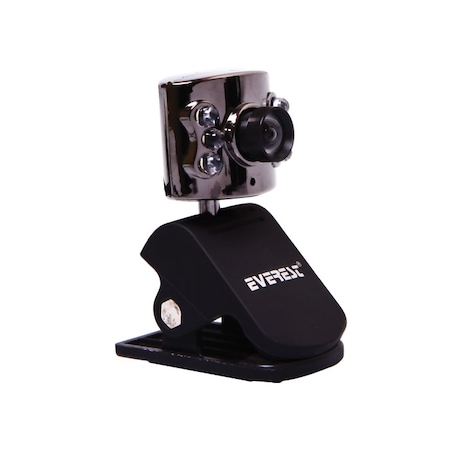3d Modelj Rozi
The complex structure of an object can be described by 3D refractive index. The melanocyte to the keratinocyte (the Cooperative-Capture Model) (J. Farzan Khatib,; Rozi Mahmud,; M. Iqbal Saripan,; Syamsiah Mashohor,; Raja. Parallel Oral Session 3D. Chairpersons: M. Banach (Lodz-POLAND) M.A. Weber (New York, NY-USA) 15.30THE MECHANISM OF CARDIOPROTECTIVE ACTION OF OXYTOCINJ. Gutkowska, A. JankowskiMontreal-CANADA 15.40PREVALENCE OF LEFT VENTRICULAR HYPERTROPHY IN HYPERTENSION: AN UP-DATED ANALYSIS OF ECHOCARDIOGRAPHIC STUDIESC.
Ultrasensitive responses are common in cellular information transfer because they allow cells to decode extracellular stimuli in an all‐or‐none manner. Biochemical responses are usually analyzed by fitting the Hill equation, and the estimated Hill coefficient is taken as a measure of sensitivity. However, this approach is not appropriate if the response under consideration significantly deviates from the best‐fit Hill equation. In addition, Hill coefficients greater than unity do not necessarily imply ultrasensitive behaviour if basal activation is significant. In order to circumvent these problems we propose a general method for the quantitative analysis of sensitivity, the relative amplification plot, which is based on the response coefficient defined in metabolic control analysis.
To quantify sensitivity globally (i.e. Over the whole stimulus range) we introduce the integral‐based relative amplification coefficient. Our relative amplification approach can easily be extended to monotonically decreasing, bell‐shaped or nonsaturated responses. In cellular signal transduction, a stimulus (e.g. An extracellular hormone) brings about intracellular responses such as transcription. These responses may depend on the extracellular hormone concentration in a gradual or an ultrasensitive (i.e.
All‐or‐none) manner. In gradual systems, a large relative increase in the stimulus is required to accomplish large relative changes in the response, while a small relative alteration in the stimulus is sufficient in ultrasensitive systems. Coreldraw graphics suite 2018 keygen. Ultrasensitive responses are common in cellular information transfer [ -] as this allows cells to reject background noise, while amplifying strong inputs [, ]. In addition, ultrasensitivity embedded in a negative‐feedback loop may result in oscillations [ ], while bistability can be observed in combination with positive feedback [, ]. Surprisingly, ultrasensitive signalling cascades equipped with negative feedback may also exhibit an extended linear response [ ]. Finally, spatial gradients known to be important in development can be converted to sharp boundaries if they elicit ultrasensitive responses [ ]. Previous theoretical work has demonstrated that ultrasensitivity in the fundamental unit of signal transduction, the phosphorylation–dephosphorylation cycle, can arise if the catalyzing enzymes operate near saturation [ ] and/or if an external stimulus acts on both the phosphorylating kinase and the dephosphorylating phosphatase in opposite directions [, ].
Creative prodikeys driver for 64 bt Hi, Creative have a keyboard which has a MIDI keyboard build in under the wristrest. Great idea but Creative can't be bothered to release driveers for Windows 7.  Try the Yamaha drivers, yes, may work. Creative prodikeys driver for 64 bt – Microsoft Community. When I try to re-install it, it shows that it is prodikeys windows 7 64 bit. Then, you can install the updated drivers. Creative Creative Prodikeys Dm now has a special edition for these Windows versions: Talk to a Technician Now!
Try the Yamaha drivers, yes, may work. Creative prodikeys driver for 64 bt – Microsoft Community. When I try to re-install it, it shows that it is prodikeys windows 7 64 bit. Then, you can install the updated drivers. Creative Creative Prodikeys Dm now has a special edition for these Windows versions: Talk to a Technician Now!

In addition, multisite phosphorylation [ ], stoichiometric inhibition [ ], regulated protein translocation [ ] and cascade amplification effects [ ] have been shown to contribute to ultrasensitive behaviour in more complex systems. Biochemical responses are usually analyzed by fitting the Hill equation, and the estimated Hill coefficient is taken as a measure of sensitivity. However, this approach is not appropriate if the response under consideration significantly deviates from the best‐fit Hill equation. In addition, Hill coefficients greater than unity do not necessarily imply ultrasensitive behaviour if basal activation is significant. In order to circumvent these problems, we present a general framework for the quantitative analysis of sensitivity, the relative amplification approach, which is based on the response coefficient defined in metabolic control analysis [ ]. The relative amplification approach allows quantification of sensitivity, at both local and global levels. In addition, our approach also applies for monotonically decreasing, bell‐shaped or nonsaturated responses.
(2) Here, X basal and X max are the basal and the maximal responses, respectively, while S 50 refers to the stimulus required to reach half‐maximal activation. Depending on the Hill coefficient, n H, the system is referred to as ultrasensitive ( n H > 1), hyperbolic ( n H = 1) or subsensitive ( n H. Limitations of the Hill approach: deviation from the Hill equation. (A) Schematic representation of the positive feedback model (). (B) The response of the positive feedback model (solid line) significantly deviates from the best‐fit Hill equation (dashed line) with n H = 1.19, so that fitting to the Hill equation is inappropriate for the quantification of ultrasensitivity. For comparison, the Michaelis–Menten equation is also shown (dotted line).
Parameters assumed in the positive feedback model (see in ): k K = 1, k A = 1.3, m = 3, X 50 = 0.5, X tot = 1 and k P = 1. The Hill equation was fitted by using the least‐squares method with the stimulus values S i = 1.0233 I 10 −2 and I ∈ [100, 101,, 300], which cover 10–90% of the maximal response (i.e.
